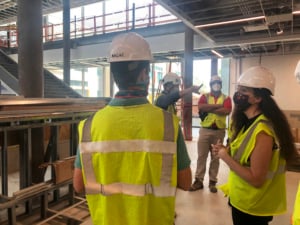Micro-Unit and SEDU Housing in U.S. Cities
Last month, MGAC’s West Coast team joined Cox, Castle & Nicholson for our first virtual joint-session of the Adapting and Thriving Series titled “Confronting California’s Housing Crisis – In Search of a New and Resilient Model.” The session focused on regulatory, transactional, design, and construction challenges for housing projects.
The video clip above encompasses a discussion of micro-unit housing in U.S. cities with a focus on historical information and local regulations. To see the full virtual session, click the link below.
“Confronting California’s Housing Crisis – In Search of a New and Resilient Model.”
VIDEO TRANSCRIPTION
So, micro-format housing is really a response to young adults entering the workforce. They’re priced out of the housing markets that exist now in a lot of the large cities. You’ve seen these things in Tokyo and in Hong Kong they’re basically, adult dorm rooms, if you will. That’s kind of a negative way to spin it, but they’re very small footprint, and they usually have shared amenity spaces.
Now, what’s different in the way that it’s being looked at now in some larger cities, plus Seattle and Los Angeles, is local jurisdictions are actually disqualifying micro-housing if it has shared amenities. So they’re actually putting forward now Small Efficiency Dwelling Units or SEDUs. They have their own kitchen, laundry, bathing inside each unit. That’s one way forward.
Now, the history on this is, which is very interesting, is Seattle led the way. It started back in 2012 to around 2015. I think they built more than 5,500 units or SEDUs because their housing was much like ours, very limited, and prices were skyrocketing. Initially, there was a large opposition to it. They didn’t want micro units because of the fact that it did mean affordable housing in our communities.
So, the legislation changed it, the SEDUs to get a little bit larger. It started around 2017 actually, and onward, they really be focused on making it more affordable, but also not calling it affordable. So, LA has really started to go through the same growth point pains and started to learn I think from some of the things that Seattle experienced.
So, LA in the 2008 financial crisis, development was hit really hard as everybody knows. As a matter of fact, LA was the only major city that stopped building and expanding the housing base. California as a whole from 2011 to 2016 added only one new housing unit for every five new residents. And that’s staggering if you think about it because we’re a city that’s experiencing the things that we are now that could have been prevented had the right legislation been in place. So, there’s a gap that needs to be addressed. So, I think that’s why the SEDUs are a good opportunity.








